Global Autonomous Driving Simulation and Virtual Test Industry Chain Report, 2018-2019
It is in this report that the autonomous driving simulation industry is analytically expounded, ranging from simulation platform, vehicle dynamics simulation, sensor simulation, scenario simulation to scenario library.
Simulation technologies seem afar to people’s lives and are hard to understand for them, but it is a key domain in which breakthroughs are to be made for automotive sector, even intelligent manufacturing in China and it deserves heavy investments.
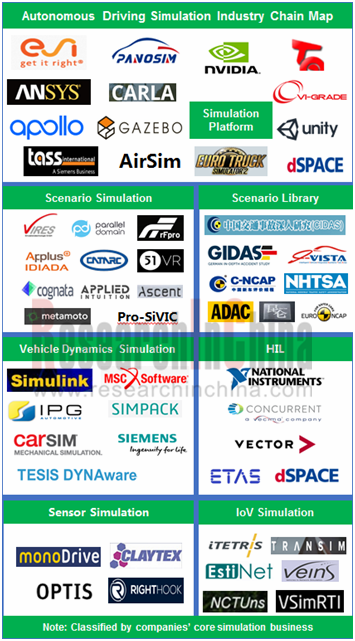
Simulation technology is the simulation model technology that reveals the system behaviors and process by way of simulation experiments and numerical computing with simulation hardware and software. Simulation technology found initial application in the early 20th century, taking example for the building of water conservancy model in laboratories for research of hydraulics. In 1940s-1950s, the burgeoning aviation & aerospace and atomic energy technologies conduced to advances in simulation technology. In 1960s, the computer technology flourished and the advanced simulation tools became available, which expedited evolution of simulation technology.
From 1990s on, simulation and digital virtualization technologies has been an integral crucial to the R&D of automobiles. The advanced idea to develop cars based on mathematical model and digital simulation has prevailed among the automakers worldwide.
The vehicle R&D becomes ever sophisticated as cars are going smarter and smarter, causing higher costs of vehicle development and a prolonged development cycle. Lots of new technologies about vehicle security are subject to external environment and test security restraints and are hard to be carried out effectively. Yet, the traditional means for R&D, tests and validation are out of date.
For adequate security validation, autonomous driving requires a great deal of scalable simulation testing service (billions of km and even to tens of billions of km). Actually, the real road test is featured with low efficiency, and many automakers favor selecting autonomous driving simulation tests.
It is pointed out by a guest speaker on an automobile forum that, 90 percent of autonomous driving tests will be done by simulation, 9 percent done in test fields, and 1 percent on real roads.
The so-called autonomous driving simulation tests are to test autonomous cars with technologies such as sensor simulation, vehicle dynamics simulation, advanced graphics processing, traffic flow simulation, numerical simulation and road modeling, and with algorithms to build the comparatively real driving scenarios.
Such processes must be undergone to develop an autonomous driving system, as software simulation, hardware in the loop (HiL), vehicle in the loop (VIL), indoors lab tests, outdoor test field, and to ultimately the massive tests on public roads.
The Vehicle Simulation Industry Dominated by German and American Companies
There are dozens of simulation test companies around the globe, among which America ranks first by the number of companies but Germany boast most simulation firms in the automotive sector.
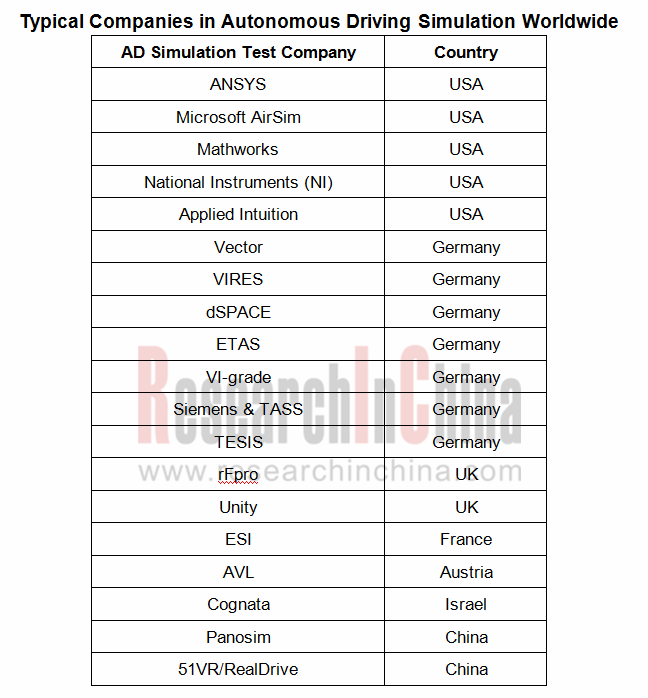
It can be seen from the development course of simulation industry that new opportunities emerge all the time and the emerging companies have sprung up incessantly. Simulation tycoons have grown ever competitive through mergers and acquisitions and have developed dozens of and even hundreds of product categories which are applied in tens of industries.
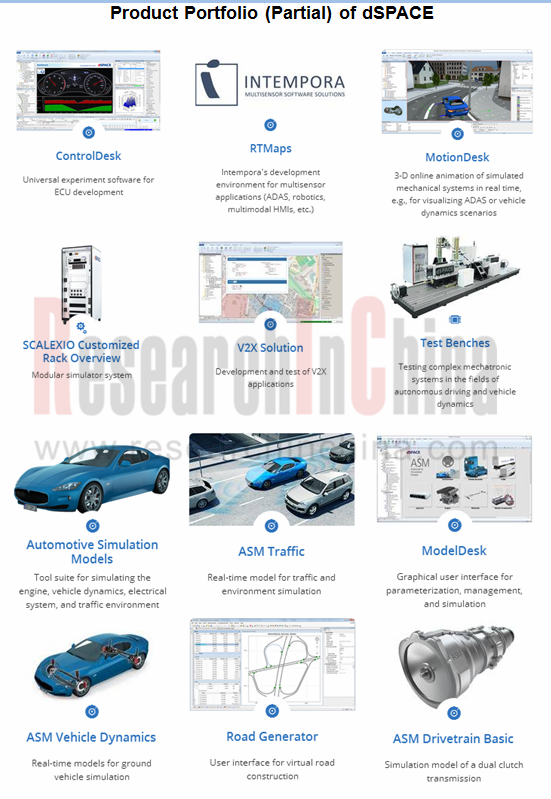
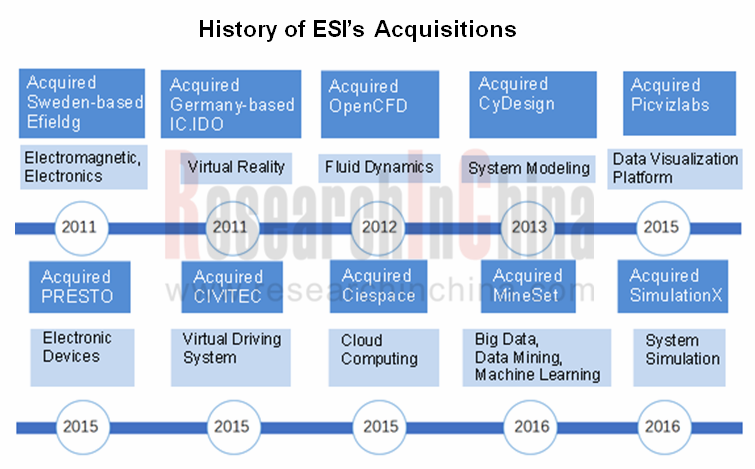
Through over ten acquisitions on companies inside and outside the industry, ANSYS dominates the CFD market, develops the embedded codes, beefs up chip encapsulation design, and enriches internal combustion engine simulation products. ANSYS purchased OPTIS in 2018 and improved the simulation technologies about sensors like LiDAR, camera and radar.

The potentiality of the autonomous driving simulation market has allured the inrush of many enterprises outside the automotive sector.
Autonomous driving tests call for various traffic scenarios simulation tool and massive scenario library. This is a totally new market, bringing traditional simulation companies, startups and new entrants on a par, and attracting the inroads of game firms, VR/AR firms and internet firms.
In October 2018, Cognata -- the Israel-based autonomous driving simulation startup -- completed the B-round funding of $18.5 million. Cognata reproduces the cities on its 3D simulation platform by fusing artificial intelligence, deep learning and computer vision, and provides the customers with a variety of the driving test scenarios simulating the real world. AID (Autonomous Intelligent Driving GmbH) under Audi reached cooperation with Cognata.
Founded in 2015, 51VR was grown from real property market and then made its foray in automobile, education, games and other fields, and is now primarily focused on 3D simulation reconstruction. In December 2017, 51VR conducted its B-round funding of RMB210 million. For now, 51VR boasts nearly 100 talents in the automotive business covering three modules, i.e., simulated driving experience (VR car), vehicle visualization, and autonomous driving simulation platform, of which simulation platform team accounts for more than a half of its workforce.
Baidu Apollo simulation platform is in-built with simulation scenarios with HD maps in favor of multi-algorithm (sensing, planning and control) module verification, making the autonomous driving algorithm verification more rigorous. Apollo 1.5 version began to open its simulation platform, empowering autonomous driving companies like Idriverplus to significantly improve their efficiency in R&D via Apollo cloud simulation capabilities. Baidu Apollo could sell HD map, simulation platform, computing hardware ACU in future, said by Li Yanhong, the chairman of Baidu. So, simulation platform will be one of the profit points of Baidu self-driving platform.
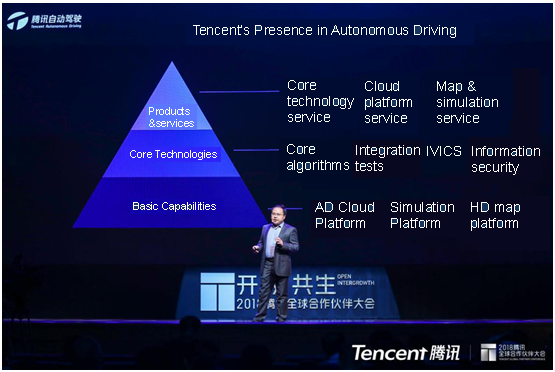
In line with Tencent’s layout in autonomous driving, simulation platform is one of the three basic competencies; maps and simulation services will be one of three profit engines of Tencent in future. Thanks to its superiorities in game engine, virtual reality, cloud games technologies, etc., Tencent has successfully built the simulation system TAD Sim (virtual + real combination) that is capable of verifying the closed-loop simulation of all modules (like sensing, decision, control algorithm) of a real car. Tencent wishes its simulation platform can help the automakers shorten development cycle, improve development efficiency, and reduce the costs of tests.
Since simulation software involves with hundreds of product categories, into which there are many ways to go. In comparison with difficulties in chassis and vehicle chip, the (automotive) industrial software represented by autonomous driving simulation is possibly the best field where IT/AI/VR firms can make investments.
Autonomous Driving Domain Controller and Central Computing Unit (CCU) Industry Report, 2025
Research on Autonomous Driving Domain Controllers: Monthly Penetration Rate Exceeded 30% for the First Time, and 700T+ Ultrahigh-compute Domain Controller Products Are Rapidly Installed in Vehicles
L...
China Automotive Lighting and Ambient Lighting System Research Report, 2025
Automotive Lighting System Research: In 2025H1, Autonomous Driving System (ADS) Marker Lamps Saw an 11-Fold Year-on-Year Growth and the Installation Rate of Automotive LED Lighting Approached 90...
Ecological Domain and Automotive Hardware Expansion Research Report, 2025
ResearchInChina has released the Ecological Domain and Automotive Hardware Expansion Research Report, 2025, which delves into the application of various automotive extended hardware, supplier ecologic...
Automotive Seating Innovation Technology Trend Research Report, 2025
Automotive Seating Research: With Popularization of Comfort Functions, How to Properly "Stack Functions" for Seating?
This report studies the status quo of seating technologies and functions in aspe...
Research Report on Chinese Suppliers’ Overseas Layout of Intelligent Driving, 2025
Research on Overseas Layout of Intelligent Driving: There Are Multiple Challenges in Overseas Layout, and Light-Asset Cooperation with Foreign Suppliers Emerges as the Optimal Solution at Present
20...
High-Voltage Power Supply in New Energy Vehicle (BMS, BDU, Relay, Integrated Battery Box) Research Report, 2025
The high-voltage power supply system is a core component of new energy vehicles. The battery pack serves as the central energy source, with the capacity of power battery affecting the vehicle's range,...
Automotive Radio Frequency System-on-Chip (RF SoC) and Module Research Report, 2025
Automotive RF SoC Research: The Pace of Introducing "Nerve Endings" such as UWB, NTN Satellite Communication, NearLink, and WIFI into Intelligent Vehicles Quickens
RF SoC (Radio Frequency Syst...
Automotive Power Management ICs and Signal Chain Chips Industry Research Report, 2025
Analog chips are used to process continuous analog signals from the natural world, such as light, sound, electricity/magnetism, position/speed/acceleration, and temperature. They are mainly composed o...
Global and China Electronic Rearview Mirror Industry Report, 2025
Based on the installation location, electronic rearview mirrors can be divided into electronic interior rearview mirrors (i.e., streaming media rearview mirrors) and electronic exterior rearview mirro...
Intelligent Cockpit Tier 1 Supplier Research Report, 2025 (Chinese Companies)
Intelligent Cockpit Tier1 Suppliers Research: Emerging AI Cockpit Products Fuel Layout of Full-Scenario Cockpit Ecosystem
This report mainly analyzes the current layout, innovative products, and deve...
Next-generation Central and Zonal Communication Network Topology and Chip Industry Research Report, 2025
The automotive E/E architecture is evolving towards a "central computing + zonal control" architecture, where the central computing platform is responsible for high-computing-power tasks, and zonal co...
Vehicle-road-cloud Integration and C-V2X Industry Research Report, 2025
Vehicle-side C-V2X Application Scenarios: Transition from R16 to R17, Providing a Communication Base for High-level Autonomous Driving, with the C-V2X On-board Explosion Period Approaching
In 2024, t...
Intelligent Cockpit Patent Analysis Report, 2025
Patent Trend: Three Major Directions of Intelligent Cockpits in 2025
This report explores the development trends of cutting-edge intelligent cockpits from the perspective of patents. The research sco...
Smart Car Information Security (Cybersecurity and Data Security) Research Report, 2025
Research on Automotive Information Security: AI Fusion Intelligent Protection and Ecological Collaboration Ensure Cybersecurity and Data Security
At present, what are the security risks faced by inte...
New Energy Vehicle 800-1000V High-Voltage Architecture and Supply Chain Research Report, 2025
Research on 800-1000V Architecture: to be installed in over 7 million vehicles in 2030, marking the arrival of the era of full-domain high voltage and megawatt supercharging.
In 2025, the 800-1000V h...
Foreign Tier 1 ADAS Suppliers Industry Research Report 2025
Research on Overseas Tier 1 ADAS Suppliers: Three Paths for Foreign Enterprises to Transfer to NOA
Foreign Tier 1 ADAS suppliers are obviously lagging behind in the field of NOA.
In 2024, Aptiv (2.6...
VLA Large Model Applications in Automotive and Robotics Research Report, 2025
ResearchInChina releases "VLA Large Model Applications in Automotive and Robotics Research Report, 2025": The report summarizes and analyzes the technical origin, development stages, application cases...
OEMs’ Next-generation In-vehicle Infotainment (IVI) System Trends Report, 2025
ResearchInChina releases the "OEMs’ Next-generation In-vehicle Infotainment (IVI) System Trends Report, 2025", which sorts out iterative development context of mainstream automakers in terms of infota...